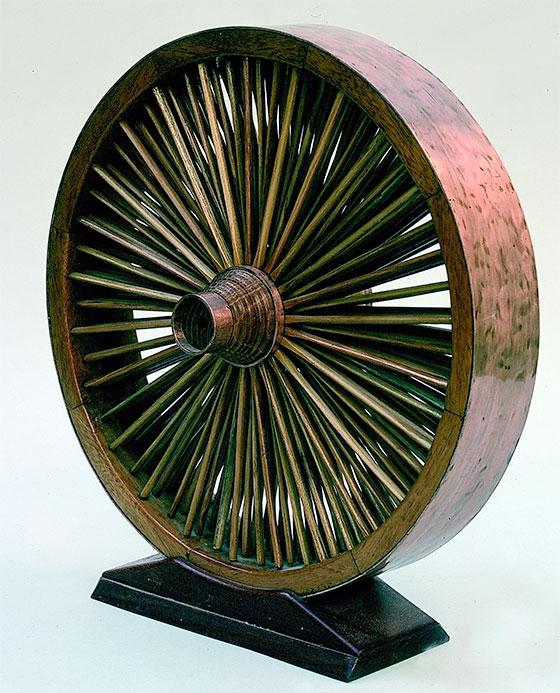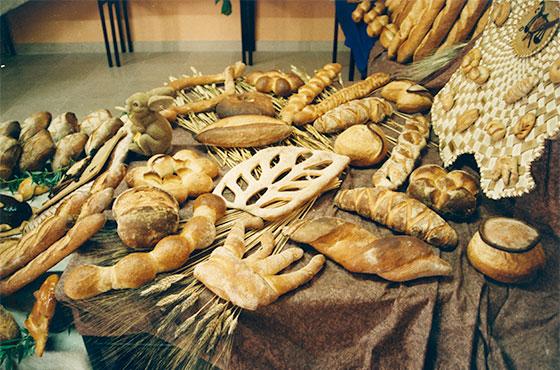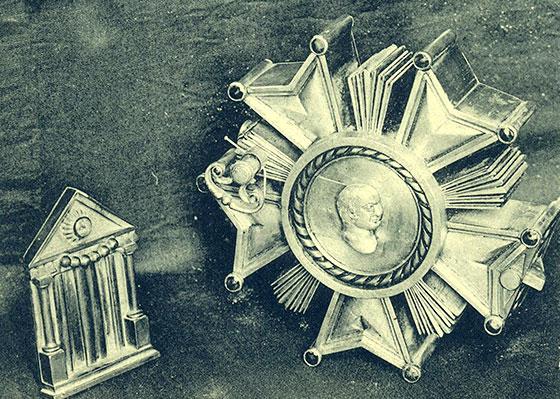The masterpiece
The title of ‘compagnon’ is an acknowledgement of one’s merits by one’s peers. One of the requisites is to be in full possession of the skills of one’s craft. The candidate must prove it by producing a masterpiece, also called a reception piece.
The title of ‘compagnon’ is an acknowledgement of one’s merits by one’s peers. One of the requisites is to be in full possession of the skills of one’s craft. The candidate must prove it by producing a masterpiece, also called a reception piece.
The word « maquette » (model) has been prevalent these last decades although it does not exactly describe the nature of the work. In fact, the future compagnon works outside the constraint of imposed dimensions and his product is not necessarily the scale model of an actual, useful object. The reception piece for a joiner could, for instance, be a model staircase in a scale 1/10 to 1/2, but could just as well be a rendering of a cornucopia in framed panels. What is really important is to prove through the piece that its author can tackle the difficulties of his craft.
A young shoemaker a few years ago produced four shoes of diverse styles, all sown on a single sole, resulting in an object technically faultless, aesthetically pleasant, but of course of no practical use. Sometimes the reception piece will be a full size work that will remain as part of the compagnons’ lodgings (a door, part of a roof, a stone flooring). In the category of reception pieces that can be put to use, you also find those produced by the bakers, pastrycooks, cooks, etc that must be as satisfying to the eyes as to the taste-buds and be proof of a subtle knowledge in the composition of the ingredients.
The reception pieces are uncompromisingly rated by the other compagnons before each of the two ceremonies that mark the acceptance of the candidate into the community. The first step is the adoption, where the level of difficulty demanded for the maquette is only mild, the second being the reception to the title of ‘compagnon’ and full membership, where the candidate is to show all his worth.
Masterpieces can also be made for other reasons. In the past, when two brotherhoods of the same craft but of different rites vied for the monopoly of labour in a city, they sometimes agreed to settle the issue through a competition. One or a few compagnons selected by each side were put to the task to produce the most perfect and elaborate piece on a given theme, while kept incommunicado for a determined period. Such was the case for the locksmiths in Marseille in 1809 when Ange le Dauphiné, compagnon du Devoir, produced an outstanding piece of which we unfortunately have only photos as it was stolen in 1942.
Some masterpieces are made for the sheer pleasure of solving difficulties, as a pastime or, in our day, in the nationwide competition of the « Meilleurs ouvriers de France ».
In the 19th century, particularly among the carpenters, huge collective masterpieces were produced to assert the tenets of Compagnonnage in a city and also motivated by the rivalry between the compagnons du Devoir and those of the Devoir de Liberté. These impressive tours de force were exhibited in trade fairs and paraded in the streets on the patron saint’s day. A famous one was made as a token of gratitude and presented to the barrister who defended the compagnons put on trial for leading a strike.

Impressive number of spokes in this wheel, masterpiece of a compagnon cartwright. ─ Photo R. Nourry

Masterpiece of a compagnon baker, 1995.

The masterpiece produced by Ange le Dauphiné in the 1809 competition in Marseille. ─ Postcard.
